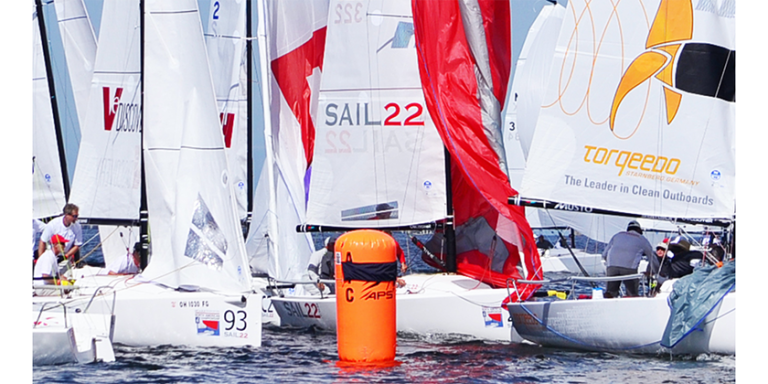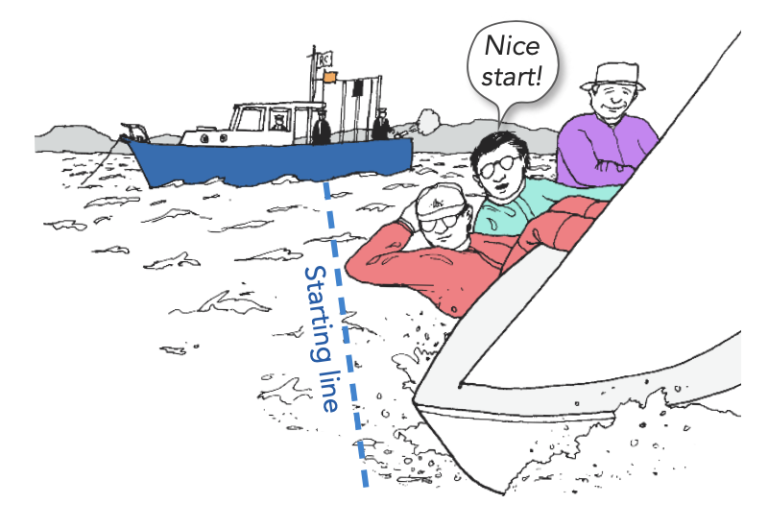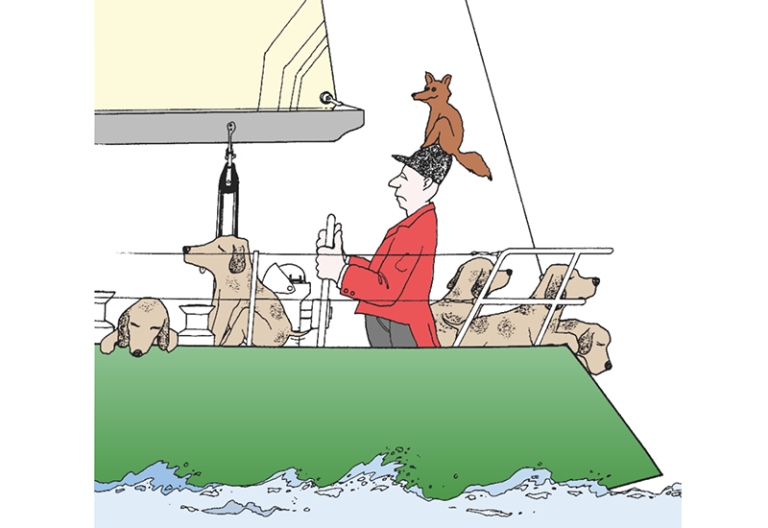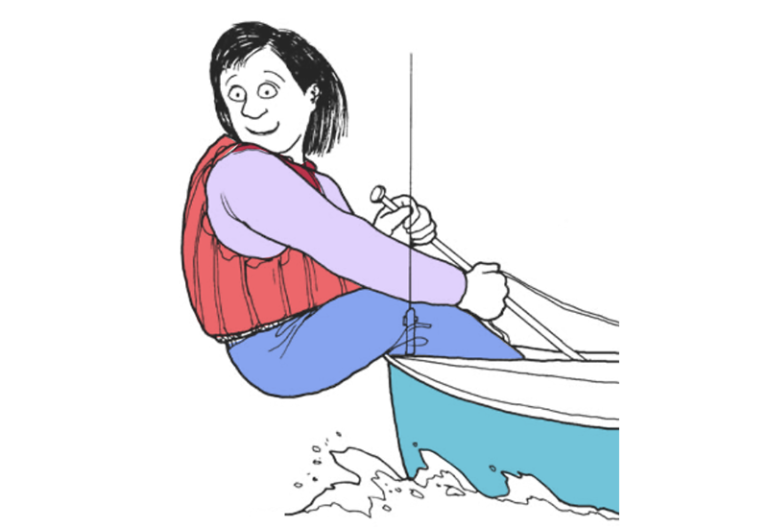Speed & Smarts: Go For Puffs in Light Air, Shifts in Breeze
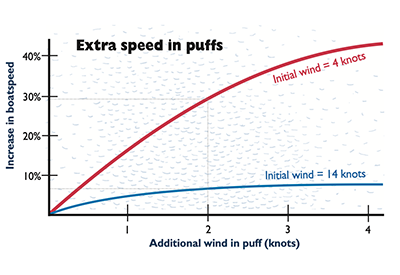
Mar 30, 2022
You’re sailing upwind on port tack on the first beat of a race, and it feels like you are on a pretty good lift. However, when you look toward the left side of the course, you see a small increase in wind pressure. Should you keep sailing on the lift, or tack to head for a little more breeze?
In many situations like this, the answer depends on how much wind you have. In heavy air, it is likely that you are already overpowered and sailing almost as fast as the boat will go upwind. In this case, another knot or two of wind will not make you point higher or go much faster through the water. However, sailing the lifted tack will be very helpful in getting to the windward mark. Therefore, when it’s breezy, a general rule of thumb is to play the shifts first and not worry so much about going for the puffs.
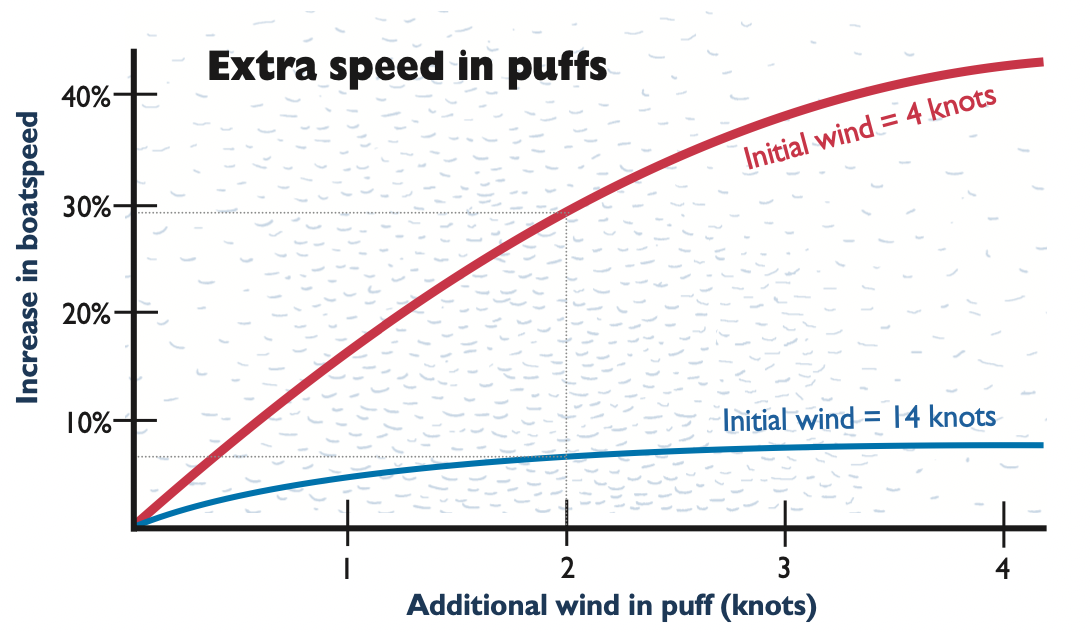
Figure 1 – In light air, getting to a puff will help your speed a lot more than it will in heavy air. This (very approximate) graph shows how much your speed may increase with each knot of extra wind you get. When you start off with four knots of wind (red line), for example, a two-knot puff may increase your speed 30%. But if you initially have 14 knots of wind, the same increase in pressure will probably increase your speed less than 10%. That’s why puffs are so critical when it’s light.
In light air, however, the total opposite is true. When you are slow, even a small increase in pressure can have a substantial impact on your speed. If the mean wind speed is five knots, a two-knot puff represents a 40% increase in available power. That is significant!
In addition to giving you better speed through the water, a puff is like a lift because it usually allows you to point higher upwind (even when the puff comes from the same wind direction). Since a puff can give you both better speed and pointing in light air, going for extra velocity should be your top priority in these conditions. Shifts are also very important, but a lift without pressure has limited value.
The rule of thumb that suggests you sail for puffs in light air and shifts in breeze is especially true on runs. When you’re going downwind in light air, changes in velocity have a much greater impact on your sailing angles than they do upwind. A puff, therefore, not only makes you go faster through the water, but may allow you to sail significantly lower (as much as 10° or 20°!). And because you are sailing with the puff (instead of into it as you do upwind), the extra breeze will stay with you longer. That’s why in light air on runs you should look care- fully for increases in pressure.
We can summarize this rule of thumb by saying that the less wind you have to start with, the more important it is to find and get into the puffs quickly. When it is windy enough that more wind doesn’t help your speed or pointing very much, then shifts are especially critical.
 Dave Dellenbaugh is the publisher, editor and author of Speed & Smarts, the racing newsletter. He was the tactician and starting helmsman on America3 during her successful defense of the America’s Cup in 1992 and sailed in three other America’s Cup campaigns from 1986 to 2007. David is also two-time winner of the Canada’s Cup, a Lightning world champion, two-time Congressional Cup winner, seven-time Thistle national champion, three-time Prince of Wales U.S. match racing champion and past winner of the U.S. Team Racing Championship for the Hinman Trophy. He is currently a member of the US Sailing Racing Rules Committee (and was its chairman from 2005-2008).
Dave Dellenbaugh is the publisher, editor and author of Speed & Smarts, the racing newsletter. He was the tactician and starting helmsman on America3 during her successful defense of the America’s Cup in 1992 and sailed in three other America’s Cup campaigns from 1986 to 2007. David is also two-time winner of the Canada’s Cup, a Lightning world champion, two-time Congressional Cup winner, seven-time Thistle national champion, three-time Prince of Wales U.S. match racing champion and past winner of the U.S. Team Racing Championship for the Hinman Trophy. He is currently a member of the US Sailing Racing Rules Committee (and was its chairman from 2005-2008).
You can subscribe to the Speed & Smarts newsletter HERE

